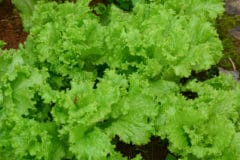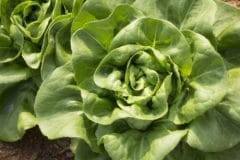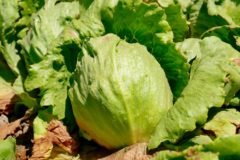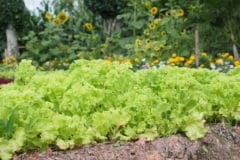Early Start
Get an early start by sowing lettuce indoors or in a greenhouse a week before the last frost. Transplant those starts to the garden once any danger of frost has passed. If planting outdoors, sow seed as soon as the ground thaws. Seeds will germinate in soil temperatures of 45 degrees Fahrenheit.
Extend a spring crop by planting lettuce below taller spring vegetables or in an area that gets afternoon shade. The shade during the hottest parts of the day will help prevent the plant from bolting as the weather warms.
Successional Planting
Successional planting is the key to harvesting fresh garden lettuce throughout the year. From your first plant date, sow new seed every two to three weeks through the fall. This way there are always new plants coming into maturity.
The summer heat causes many lettuce plants to bolt and go to seed without producing many leaves. When lettuce bolts, it produces bitter compounds that make the leaves unpalatable. Certain varieties withstand the summer better than others. Some of them include:
- Buttercrunch and other “cut and come again” varieties
- Summer Crisp or French Crisp
- Romaines including Jericho and Anuenue
- Leafy varieties like Royal Oak Leaf, Red Sails, and Green Vision.
Try out multiple varieties to find out which work best in your garden. You may end up with different favorites during the spring, summer, and fall seasons.
Autumn Planting
Autumn lettuce is planted 4 to 8 weeks before the first frost, typically in August. Again, a little mid-day shade goes a long way toward preventing bolt during the hot August sun. Extend the growing season by putting lettuce underneath a cold frame or plastic row cover. Often this prolongs the life of the plant well into winter.
Lettuce is an easy to grow vegetable. It doesn’t mind being tightly packed together or growing amidst other plants, and successional plantings will provide fresh salads most of the year.












